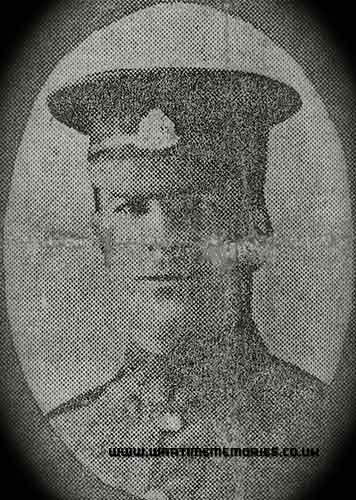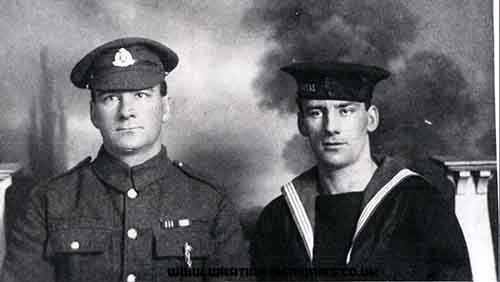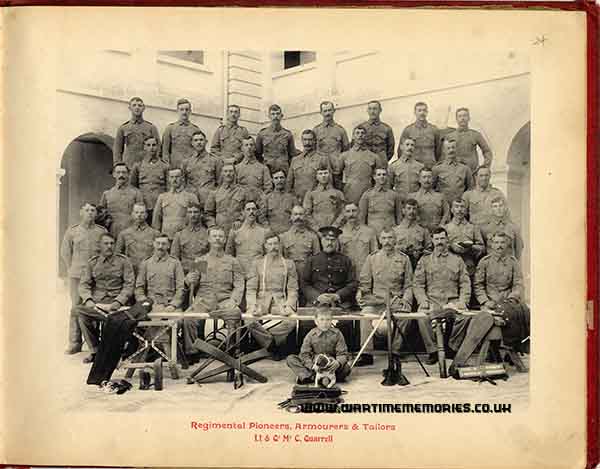Additions will be checked before being published on the website and where possible will be forwarded to the person who submitted the original entries. Your contact details will not be forwarded, but they can send a reply via this messaging system.
please scroll down to send a message
Pte James Henry Jordan MM.
British Army 7th Btn Suffolk Regiment
from:Ipswich
Jim Jordan joined the 1st Battalion Suffolk Regiment in 1907 at the age of 19. He was quickly posted to Malta, where he learned his trade of tailor. After Malta came Khartoum and Egypt. The Battalion arrived back in England in November 1914, and set foot in France in February 1915, where they took part in the Second Battle of Ypres and later that year the Battle of Loos. My grandfather was wounded three times during the war but we do not know when. We only know that after the war he was left with shrapnel embedded in his shoulder. The first occasion must have taken him out of action when the 1st Battalion left for Salonika in November 1915 and we assume then he went into the Second Battalion, and later into the 7th. He was with the 7th Battalion when he received his Military Medal (London Gazette, October 1917). On 28th November, following the Battle of Cambrai, when the use of tanks helped break through the Hindenburg Line, he and some comrades were captured. Jim spent the rest of the war at Dulmen Camp. He had four brothers on active service, one in the Navy (who served on the Royal Oak at the Battle of Jutland), and three in the Army. Unfortunately, Jim died in 1932 at the age of 44.
Additional Information:
We now know that on 26th April 1915 he received a gunshot wound to the left shoulder, was bandaged up and accompanied the Battalion as they returned to the Frezenburg Ridge. He was transferred to the Sick Convoy the following day and was then conveyed to Britain on the Hospital Ship ‘Oxfordshire’.
I discovered the following about the unit's movements the few days before this occurred, from the War Diaries of the 1st Battalion, Suffolk Regiment: On the evening of April 22nd, the French lines on the northern edge of the Ypres Salient experienced something completely new. Men coughed, spluttered, held their hands to their eyes while others ran for their lives. The enemy continued to press the attack into the chaos of the Allied line.
Two days later, bivouacking uncomfortably under hedges and in makeshift shelters between Frezenburg and Verlorenhoek, Jim and his comrades in the 1st Suffolks heard rumours that the Germans had released a poisonous gas. After a brief rest and with these disturbing thoughts not far from their minds, the Suffolks began digging themselves into a defensive position facing north-east on the Frezenburg Ridge, but no sooner had the digging started than a staff officer arrived and informed Captain Balders, who had temporary command of the battalion, that the Germans had broken through on the northern side of the Salient. The 1st Suffolk and the 12th London Regiments were required to plug the gap - they would be the only obstacle standing in the way of the Germans in their advance on the town. The staff officer urged Balders to move his men to the hamlet of Fortuin.
Having obtained permission to comply with this request from Colonel Wallace, Balders ordered the men to down tools and prepare to move. The shelling was becoming extremely heavy, and was coming from all directions except the west. On his way to Fortuin, the two battalions were intercepted by a wounded Canadian officer, who informed Balders that the two battalions were anxiously awaited and if they did not arrive soon it would be too late. Balders appreciated the gravity of the situation; shelling was becoming intense and he realised that St Julien was already in the hands of the Germans.
Jim Jordan in ‘B’ Company, together with ‘A’ Company, 150 men in all, were ordered to reinforce the Canadian left flank. ‘B’ Company dug all night and by the morning a trench 4 and a half feet deep was ready to provide shelter. By daylight on the 26th, the situation appeared so desperate Balders ordered that all documents and maps should be destroyed, although as the day wore on the outlook improved, with the expected imminent arrival of the Northumbrian Brigade Territorials.
The question I now have is: Was this injury sufficient to keep Jim Jordan out of action for the rest of the year or did he sustain another injury which prevented him from joining the 1st before they embarked at Marseilles, bound for Salonica in October of that year?
Whatever the answer to this question, we know Jim did not follow his colleagues to Salonica but instead joined the 2nd Battalion. It is likely that he received his second wound while serving with the 2nd in July 1916. Jim's name is mentioned in a casualty list in the Suffolk and Essex Free Press of 12th July 1916 but there is no mention of a hospital ship this time. What were the 2nd doing on the 12th July?
On 1st July the Battalion set out from St Omer for the Somme. During their time out of the front line, the men on both sides knew how to enjoy the moment. The British commanders made sure the men were well entertained with sports and concerts, as the following letter published in the Suffolk and Essex Free Press in October 1917 shows: “The sports were followed by an excellent concert. It would surprise you very much if you saw how the boys enjoy these concerts and you would never imagine that they were just back from a hard time in the trenches. They keep up their spirits in a marvellous manner and we are all sure that we shall win some time or other.â€
The War Diaries for the 2nd Battalion tell us that the battalion reached the wood known as Les Celestins, on the Somme, on July 6th and within an hour of its arrival Major Stubbs was slightly wounded. On July 8th the battalion bivouacked in Carnoy, one company going into the line, where its commander, Lieut. Chandler - was wounded almost immediately. The following night, two patrols went out and reconnoitred the enemy's wire, Sgt. F. Lynn, D.C.M. being killed.
I don't know if I will ever find out when Jim's third wound occurred and thus be able to put all the pieces into the jigsaw - I hope so!
Marian Thornley


